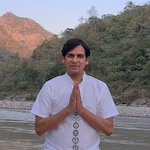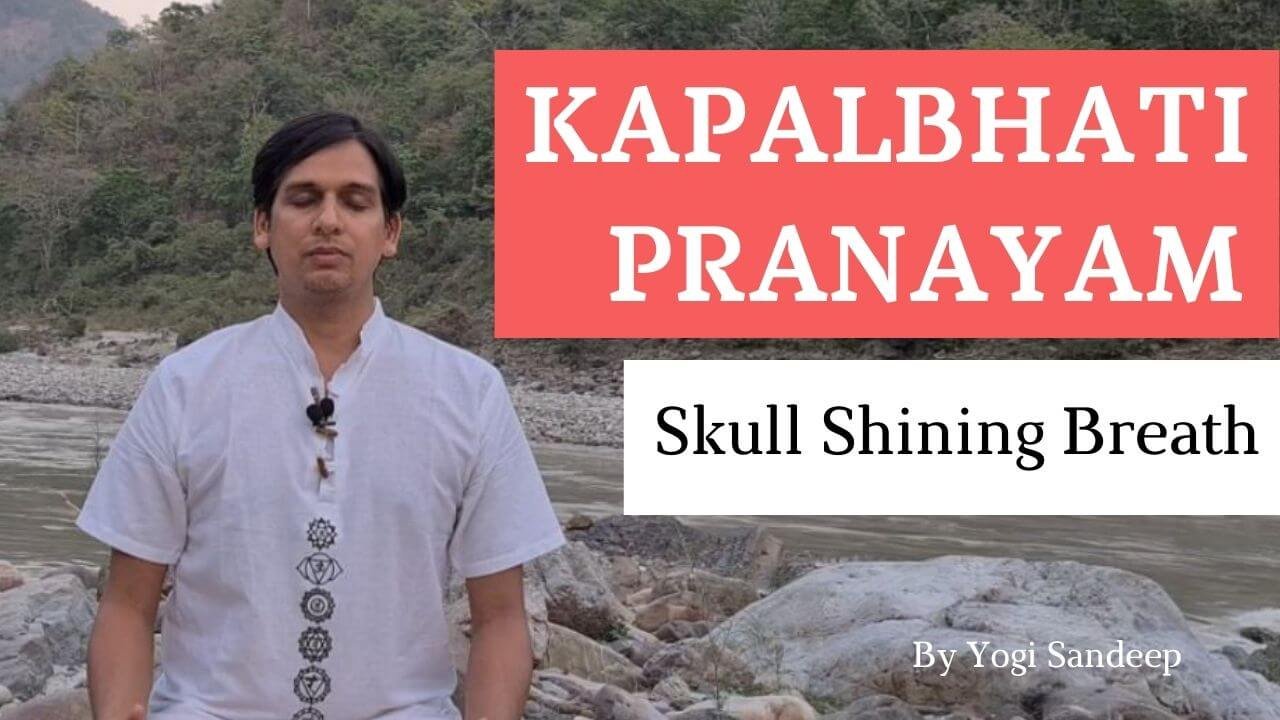Kapalbhati Pranayama is a powerful yogic breathing technique designed to energize the body and clear the mind. Its name comes from two Sanskrit words: Kapal (skull or forehead) and Bhati (shining or illuminating). Therefore, it is often called the 'Skull Shining Breath'.
Considered one of the six essential yogic cleansing techniques (Shat Kriyas), Kapalbhati uses forceful exhalations to clear toxins from the body. This amazing breathing exercise not only helps you get in shape but also brings your entire system into a perfect, harmonious balance.
What's in this Guide:
Key Benefits of Kapalbhati Pranayama
Regular practice of Kapalbhati offers a wide range of physiological and mental benefits:
- Improves Metabolism & Digestion: It enhances the metabolic rate, aids in nutrient absorption, and helps with weight loss, especially reducing belly fat.
- Clears Energy Channels: The powerful breaths clear the *nadis* (energy channels), rejuvenating the entire nervous system.
- Enhances Circulation: It improves blood circulation throughout the body, which can bring a natural glow to your face.
- Energizes the Mind: This practice enriches brain cells, leading to a more concentrated, focused, and calm mind.
- Supports Abdominal Health: The focus on abdominal organs makes it beneficial for those with diabetes and digestive issues.
How to Practice Kapalbhati: Step-by-Step
The core of Kapalbhati is an active, forceful exhalation followed by apassive, automatic inhalation.
- Sit comfortably with your spine erect. You can sit on a chair or cross-legged on the floor. Place your hands on your knees with palms facing up.
- Take a deep breath in.
- As you exhale, pull your navel in sharply toward your spine, forcing the breath out. This should be a quick and powerful contraction.
- Relax your abdomen. As you relax, the breath will automatically and passively flow back into your lungs. There is no effort in the inhalation.
- Repeat this cycle. Start with a round of 20 breaths.
- After completing one round, relax with your eyes closed and observe the sensations in your body.
- Complete two more rounds to finish your practice.
Tips for Beginners
- Start with three rounds of 20 breaths each. As you get comfortable over time, you can gradually increase to 30-40 breaths per round.
- Focus entirely on the forceful exhalation. The inhalation will take care of itself.
- Always practice on an empty stomach, preferably in the morning.
Watch and Learn
Follow along with this guided video to perfect your Kapalbhati technique.
Important Precautions to Follow
Kapalbhati is a powerful kriya and should be practiced with awareness. Please avoid this technique if you have any of the following conditions:
- High blood pressure, heart problems, epilepsy, or hernia.
- Back pain related to a slipped disc.
- If you have recently had abdominal surgery.
- Women should not practice during pregnancy or menstruation.
If you have any health concerns, it is essential to practice only under the guidance of a qualified yoga teacher and after consulting with your doctor.

About the Author: Yogi Sandeep
Born in Rishikesh into a traditional family where the Vedic tradition has been a way of life for generations, Yogi Sandeep is the founder of Raj Yoga Rishikesh. He is an E-RYT 500 Teacher, holds a Master's degree in Yoga, and has over a decade of teaching experience.
Kapalbhati FAQs
How many times a day should I do Kapalbhati?
For beginners, practicing once a day (preferably in the morning) is sufficient. Seasoned practitioners may do it up to three times a day, but it's an advanced practice and should be done in moderation and under proper guidance.
Can I do Kapalbhati sitting on a chair?
Yes, absolutely. The most important thing is to keep your spine straight. If sitting on the floor is uncomfortable, a chair is a great alternative.
Can I practice Kapalbhati before sleeping?
While some gentle pranayama can aid sleep, Kapalbhati is an energizing practice. It is generally recommended for the morning to invigorate your system for the day. If you practice in the evening, ensure it is on an empty stomach and not immediately before bed.
Master the Art of Breathing
Pranayama is the key to controlling your life force. Learn Kapalbhati and other ancient yogic breathing techniques in our authentic Pranayama Courses Online.
Explore Pranayama Course
